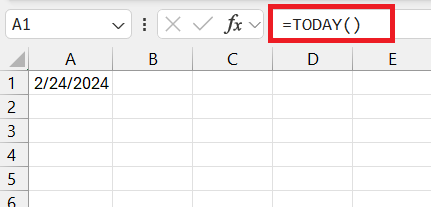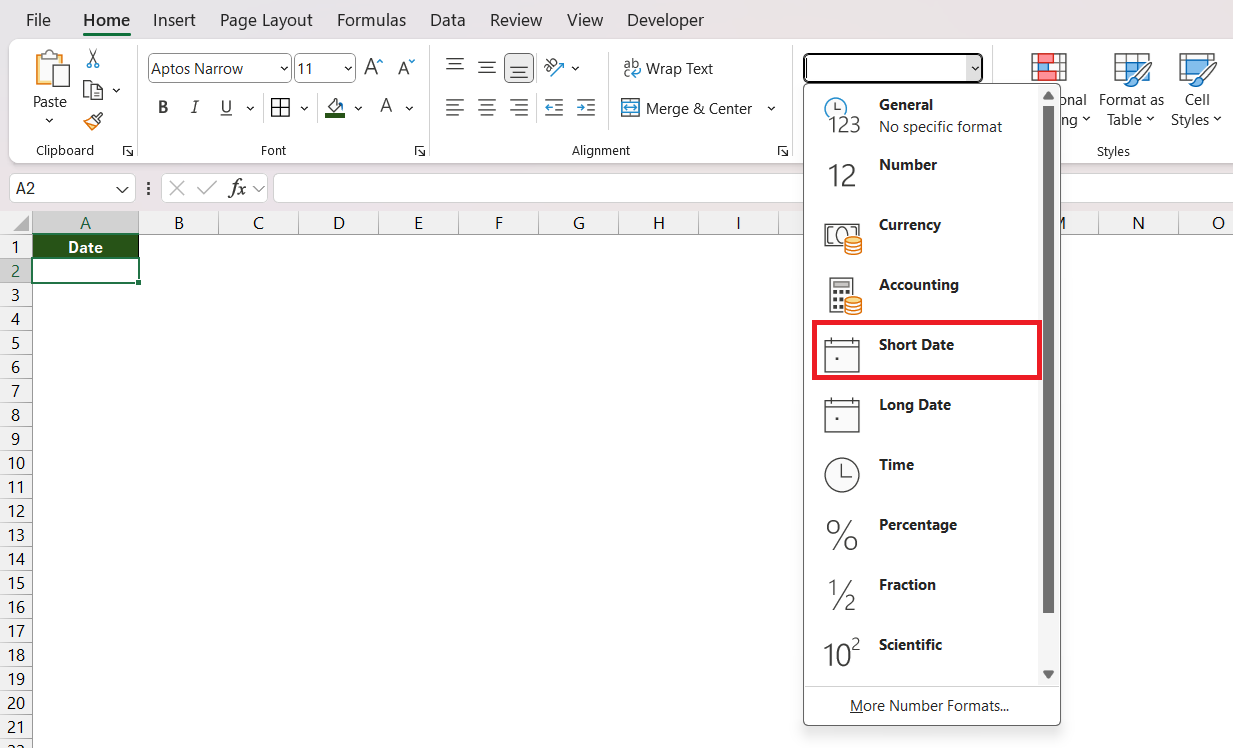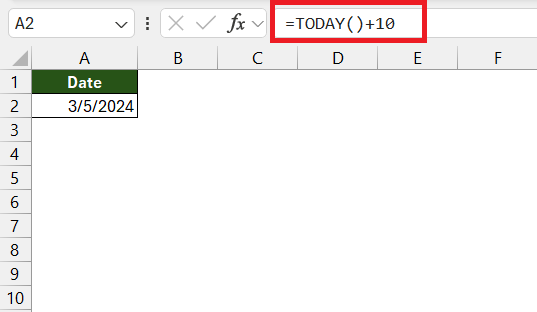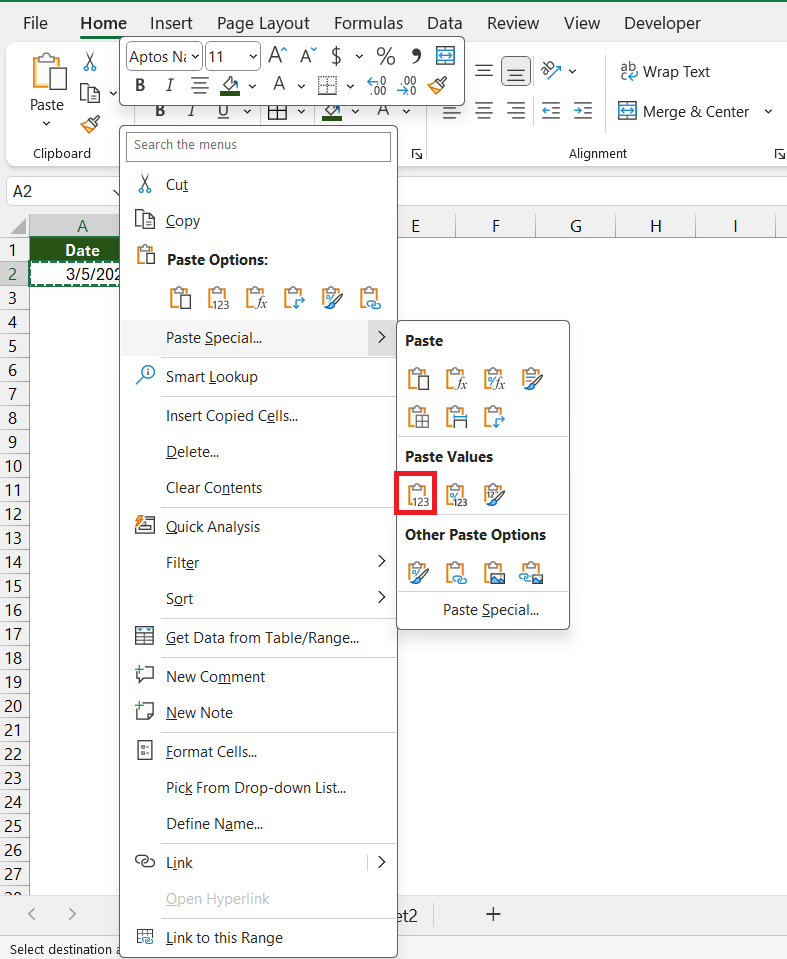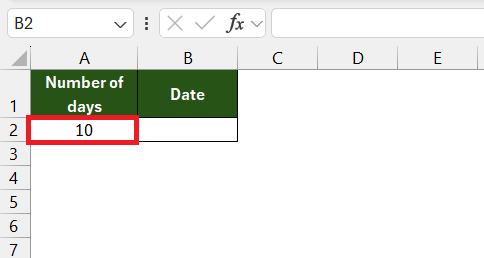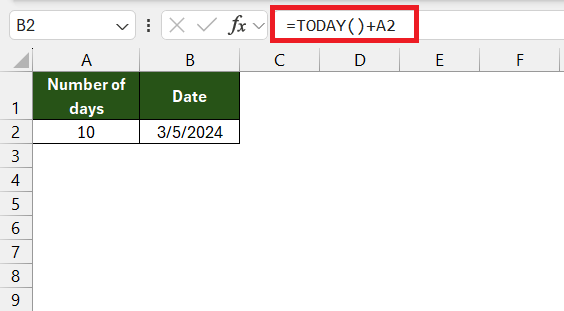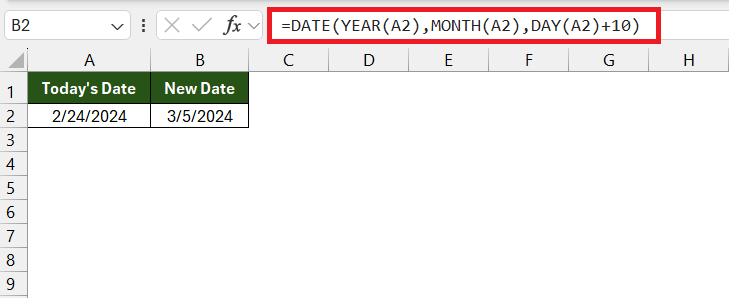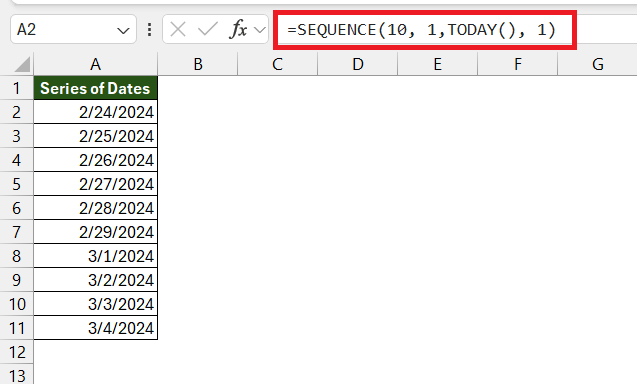Adding days to a date in Microsoft Excel is a straightforward process that can significantly help in project management and scheduling. Whether you’re dealing with deadlines, events, or personal reminders, Excel offers quick and efficient tools to modify dates. By utilizing Excel’s ‘Paste Special’ function or a simple formula, you can seamlessly extend the current date or any selected date by 10 days with just a few clicks.
Key Takeaways
- Date calculations are crucial for effective data management and analysis, allowing tracking of deadlines, measuring durations, and organizing schedules efficiently.
- TODAY() function in Excel dynamically retrieves the current date, providing real-time updates whenever the spreadsheet is opened.
- By combining TODAY() with other Excel functions, users can perform complex date calculations, including variable date additions, which allow for more dynamic and flexible operations.
Download the workbook and follow the blog to learn how to add 10 days from today in Excel – Download excel workbookAdd-10days-from-today-in-excel.xlsx
Table of Contents
Introduction: Mastering the Art of Date Manipulation in Excel
The Significance of Date Calculations in Data Management
Date calculators are a crucial aspect of data management and analysis. They allow users to track deadlines, measure durations, and organize schedules effectively. In Excel, manipulating dates is a common task that can simplify and automate chronological evaluations, leading to more efficient data handling and decision-making.
Overview: Adding Days to Current Date with Excel Functions
Excel provides a set of powerful functions to manage and manipulate dates effortlessly. Adding days to the current date is a frequent requirement in various tasks such as project planning, forecasting, and tracking. The functions like TODAY() and DATE() combined with simple arithmetic operations allows users to compute future dates with precision and ease.
Getting Started with Excel’s TODAY Function
Understanding TODAY(): A Real-time Date Generator
The TODAY() function automatically retrieves the current date, formatted as “month/day/year,” ideal for instances where up-to-date information is crucial.
Key Functions of TODAY():
- Provides the current date every time the Excel spreadsheet is opened.
- Does not require any arguments, offering ease of use by simply typing “=TODAY()” into a cell.
- Updates dynamically – the displayed date will reflect the current day with each opening of the document.
Using TODAY() Alongside Other Functions:
- To calculate one week from the current date: “=TODAY() + 7”
- To determine the date two weeks ago: “=TODAY() – 14”
As a vital component of Excel’s suite of functions, the TODAY() function serves as a real-time date generator, indispensable for tasks that necessitate the current date’s inclusion or monitoring. Here is a closer look at how to comprehend and employ the TODAY() function.
Simple Steps to Use =TODAY() and Add 10 Days
In Excel, manipulating dates to plan or adjust schedules can be effortlessly achieved using built-in functions. The `=TODAY()` function is particularly useful when you want to work with the current date and perform various operations, such as adding several days to it. Let’s walk through the simple steps you would take to use the `=TODAY()` function to add 10 days from today:
STEP 1: Make sure the cell where you are going to enter the formula is formatted for dates. You can format the cell by going to the Home tab and selecting ‘Short Date’ under the ‘Number’ dropdown.
STEP 2: In the desired cell, enter the formula `=TODAY()+10`. This formula adds 10 to the serial number that represents today’s date. Press Enter, and the cell will now display the date that is 10 days in the future from today.
If you need to add 10 days to the current date without the date changing every day, you can copy the cell with the formula and then right-click and select Paste Special > Values to paste only the value into that cell.
Enhancing Your Date Formulas
Combining TODAY() with Other Functions for Complex Calculations
When working with dates in Excel, you often need more than just simple addition or subtraction. By combining the TODAY() function with other Excel functions, you can perform complex date calculations to meet various needs.
Beyond 10 Days: Variable Date Additions Made Easy
Adding a specific number of days to a date in Excel, such as 10 days from today, is straightforward, but sometimes flexibility is needed. For cases where the number of days to add varies, Excel can handle this just as smoothly, using cell references or formulas to determine the number of days to add.
One method is to use a designated input cell where users can enter the number of days they wish to add, which is then referenced in formulas. Here’s a simple example:
STEP 1: Type the number of days you want to add in the cell, let’s say, A2.
STEP 2: In the cell where you want the new date to appear, insert the formula =TODAY() + A2. This will add the number of days specified A2 to the current date.
Whenever you need to change the number of days to be added, simply update the cell A2, and the formula will automatically calculate the new date.
Using DATE Function
Another variation involves using the DATE function, which can use the separation of year, month, and day components to construct a date. Combine this with the DAY, MONTH, and YEAR functions to break down and manipulate existing dates easily.
You can use this function to add 10 days from today –
=DATE(YEAR(A2),MONTH(A2),DAY(A2)+10)
The formula “=DATE(YEAR(A2),MONTH(A2),DAY(A2)+10)” is an Excel formula used to add 10 days to a given date stored in cell A2 and provide you with the desired output.
Here’s a breakdown of how the formula works:
- YEAR(A2): It extracts the year from the date in cell A2.
- MONTH(A2): It extracts the month from the date in cell A2.
- DAY(A2)+10: It extracts the day from the date in cell A2 and adds 10 days to it.
Using SEQUENCE Function
For more dynamic applications, Excel can cater to working with arrays or ranges of values, employing functions like SEQUENCE to generate a series of numbers that represent different intervals to be added to individual dates.
To get a series of 10 days from today, you can use this function –
=SEQUENCE(10, 1,TODAY(), 1)
The formula =SEQUENCE(10, 1, TODAY(), 1) generates a sequence of 10 consecutive numbers, each representing a date starting from today and incrementing by 1 day at a time. Let’s break down the components of this formula:
- 10: This specifies the number of elements (or cells) you want in the sequence. In this case, it’s generating a sequence of 10 dates.
- 1: This parameter indicates that the sequence should be arranged in a single column. Each date will be in a separate row.
- TODAY(): This function returns the current date. It’s being used as the starting point for the sequence. So, the sequence will start from today’s date.
- 1: This specifies the step value by which each subsequent element in the sequence is incremented. In this case, it’s 1 day. So, each date in the sequence will be exactly 1 day ahead of the previous one.
Remember, Excel stores dates as serial numbers starting from January 1, 1900, which is day 1. This means that when you add a numeric value to a date, you’re essentially moving forward that many days in the calendar. By referencing variable inputs or cells in your formulas, Excel can accommodate a wide range of date calculations beyond simple, fixed-date additions.
Advanced Tips for Accurate Date Addition
When adding dates in Excel, users may run into several common issues that can lead to errors or incorrect results. Here are some potential pitfalls and how to handle them:
- Formatting Issues: Users might add a number to a date only to see a strange result because Excel treats dates as serial numbers. To avoid this, ensure the cells are formatted correctly. Right-click the cell, select ‘Format Cells‘, go to the ‘Number’ tab, and choose an appropriate date format under ‘Date’.
- Non-Date Values: If you’re getting unexpected results, verify that the cell you’re adding days to contains a date value and not text that looks like a date.
- Negative Results: When subtracting dates, ensure you are subtracting a smaller date from a larger one to prevent negative values unless you intend to find elapsed time in a different context.
- Time Components: Dates in Excel may include time components, and adding a full day might not appear to change the date if only viewing the date part.
- Leap Years: Adding days across a leap year may require adjustments if your calculations need to be sensitive to this.
- Error Messages: If you receive an error message when trying to add days to a date, the cell may be formatted as text or the formula may be entered incorrectly. Double-check the cell formatting and the syntax of the formula.
Using Excel’s DATE, DAY, MONTH, and YEAR functions can help mitigate these problems as you can control exactly what happens when a date transitions over months or years. Also, Excel provides the EDATE function to add months to a date and ensures proper handling of the end of months.
To troubleshoot, it’s wise to break down your formulas to verify each part is returning the expected result, gradually building up to the complex formula you need. Excel’s formula auditing tools can also assist in identifying where things might be going wrong.
By being aware of and addressing these common pitfalls, you can reliably and accurately perform date addition in Excel.
FAQs: Perfecting 10-Day Additions in Excel
How do I ensure that Excel doesn’t give me an error when adding dates?
To ensure that Excel doesn’t give you an error when adding dates, first, make sure your dates are properly formatted as date values and not as text or other formats. If needed, convert them using the DATE function or by changing the cell format. Secondly, if you’re using a helper column to add a variable number of days to each date, double-check that the cells in the helper column contain numerical values representing the days to be added, and then use a simple addition formula like =B2+C2, where B2 is the original date and C2 is the number of days to add.
Can I automate the process of adding 10 days to the current date in multiple cells?
Yes, you can automate the process of adding 10 days to the current date in multiple cells in Excel. You can achieve this by using the Paste Special functionality to add a fixed number to a selection of cells with dates, or by applying a simple formula like `=B2+10` to each cell you want to update with the added days and then copying the formula down the column for all relevant dates.
What are some practical uses for adding 10 days to today’s date in business scenarios?
- Adding 10 days to today’s date is useful in project management for extending deadlines when unforeseen circumstances require adjustments to the project timeline.
- In the context of invoicing and accounting, it may be applied to extend payment terms or due dates for clients who may need a grace period beyond the standard payment cycle.
- Businesses often use this operation to calculate expected delivery dates for orders when providing customers with estimated arrival times, factoring in additional time for processing or shipping delays.
How do I subtract 10 days from a date in Excel?
To subtract 10 days from a date in Excel, select a blank cell, enter the formula `=A2-10` (assuming the date is in cell A2), and press the Enter key. If you need to apply this to other cells, drag the AutoFill handle from your formula cell to the other cells where you want to subtract 10 days.
John Michaloudis is a former accountant and finance analyst at General Electric, a Microsoft MVP since 2020, an Amazon #1 bestselling author of 4 Microsoft Excel books and teacher of Microsoft Excel & Office over at his flagship MyExcelOnline Academy Online Course.

